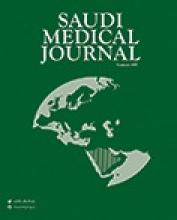SYSTEMATIC REVIEW
Comorbidities and severity of coronavirus disease 2019 patients
Radwan et al conclude that comorbidities among COVID-19 patients may contribute to increasing their susceptibility to severe illness. The identification of these potential risk factors could help reduce mortality by identifying patients with poor prognosis at an early stage. The review included 1,885 COVID-19 patients from 7 observational studies with some degree of bias risk and substantial heterogeneity. A significant association was recorded between COVID-19 severity and the following variables: male, current smoker, and the presence of comorbidities including hypertension, diabetes, coronary heart disease, chronic kidney disease, and cancer.
Odds ratio and confidence interval of the pooled effect of risk factors for the severity of COVID-19
see page 1165
ORIGINAL ARTICLES
Effects of the Coronavirus disease 2019 pandemic on routine pediatric immunization coverage rates at the main University Hospital in Saudi Arabia
Alrabiaah et al conclude that the huge impact of the coronavirus disease-2019 pandemic on childhood vaccinations will require urgent vaccination recovery plans with innovative approaches and future action plans to maintain vaccination coverage during any subsequent pandemics. All vaccination visits during April and May 2020 were below the lower extremes except for the birth vaccinations. In March, April, and May 2020 there were respective drops in vaccination visits of 49.93%, 71.90% and 68.48% compared with the mean numbers of vaccination visits during the same months from 2017 to 2019. In comparisons of mean numbers of visits from March 2017 to May 2019 and March to May in 2020, the respective reductions in visits for birth and 2, 4, 6, 9 and 12-month vaccinations were 16.5%, 80.5%, 74.7%, 72.9%, 80.0% and 74.1%.
Comparison between the mean of vaccination visits for all primary vaccination series between March and May 2017-2019 and March-May 2020. A clear drop in the vaccinations rate is noticeable during March-May 2020
see page 1197
Acute cardiac injury is associated with adverse outcomes, including mortality in COVID-19 patients. A single-center experience
Naeem et al conclude that acute cardiac injury is common among Coronavirus disease-19 patients. These patients present with higher comorbidities, have high inflammatory markers and have greater risk for in-hospital multi-organ damage, need for mechanical ventilation, and death. Prompt full assessment and intervention are recommended. During the study period, 203 patients were included, of which, 44 (21.7%) had evidence of acute cardiac injury. Compared with patients without acute cardiac injury, patients with acute cardiac injury were: older, had more shortness of breath, diabetes, hypertension, and more bilateral airspace shadowing on admission chest radiography. These patients also had a higher neutrophil count, C-reactive protein, procalcitonin, ferritin, D-dimers and lactate dehydrogenase but lower lymphocyte count.
Comparison of outcomes in patients with acute cardiac injury according to the level of troponin rise (N=44)
see page 1204
CASE REPORT
The efficacy and safety of percutaneous balloon angioplasty for aortic coarctation in children. Acute and mid-term results in a single center experience
Khoshhal et al assess the efficacy and safety of balloon angioplasty (BAP) procedure for treatment of coarctation of the aorta (CoA) in children. A retrospective study included 27 consecutive children, underwent BAP for either native-CoA (Na-CoA) or recoarctation (Re-CoA). Medical records, echocardiographic findings, angiographic and hemodynamic data were collected from the hospital database. The mean age of patients was 11.86±8.96 months. Seven children had Na-CoA and 20 children had Re-CoA.
Ascending aorta angiogram showing A) pre-BAP procedure showing localized narrowing of the descending aorta, B) during balloon dilatation, C) post-BAP showing improvement of the coarctation of the aorta CoA diameter. BAP: balloon angioplasty, COA: coarctation of the aorta
see page 1252
- Copyright: © Saudi Medical Journal
This is an open-access article distributed under the terms of the Creative Commons Attribution-Noncommercial-Share Alike 3.0 Unported, which permits unrestricted use, distribution, and reproduction in any medium, provided the original work is properly cited.










